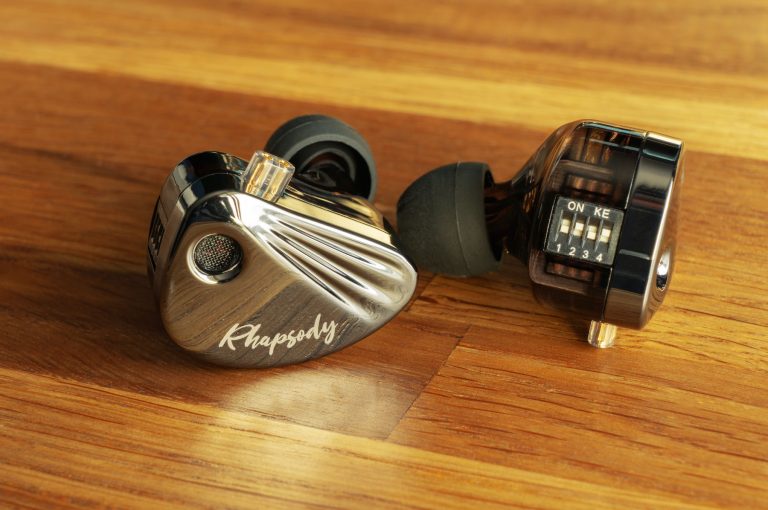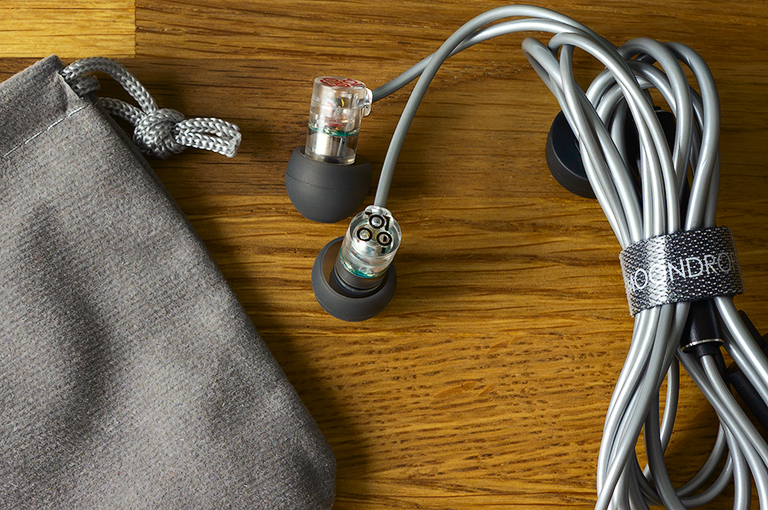Juzear × Z Reviews Defiant Earphones Review
The HiFiGo store approached me with a proposal to write a review on Juzear × Z Reviews Defiant in-ear monitors. “Monkey see monkey do, huh?”, I thought and agreed. HiFiGo, thank you a lot for the sample of the in-ears provided.
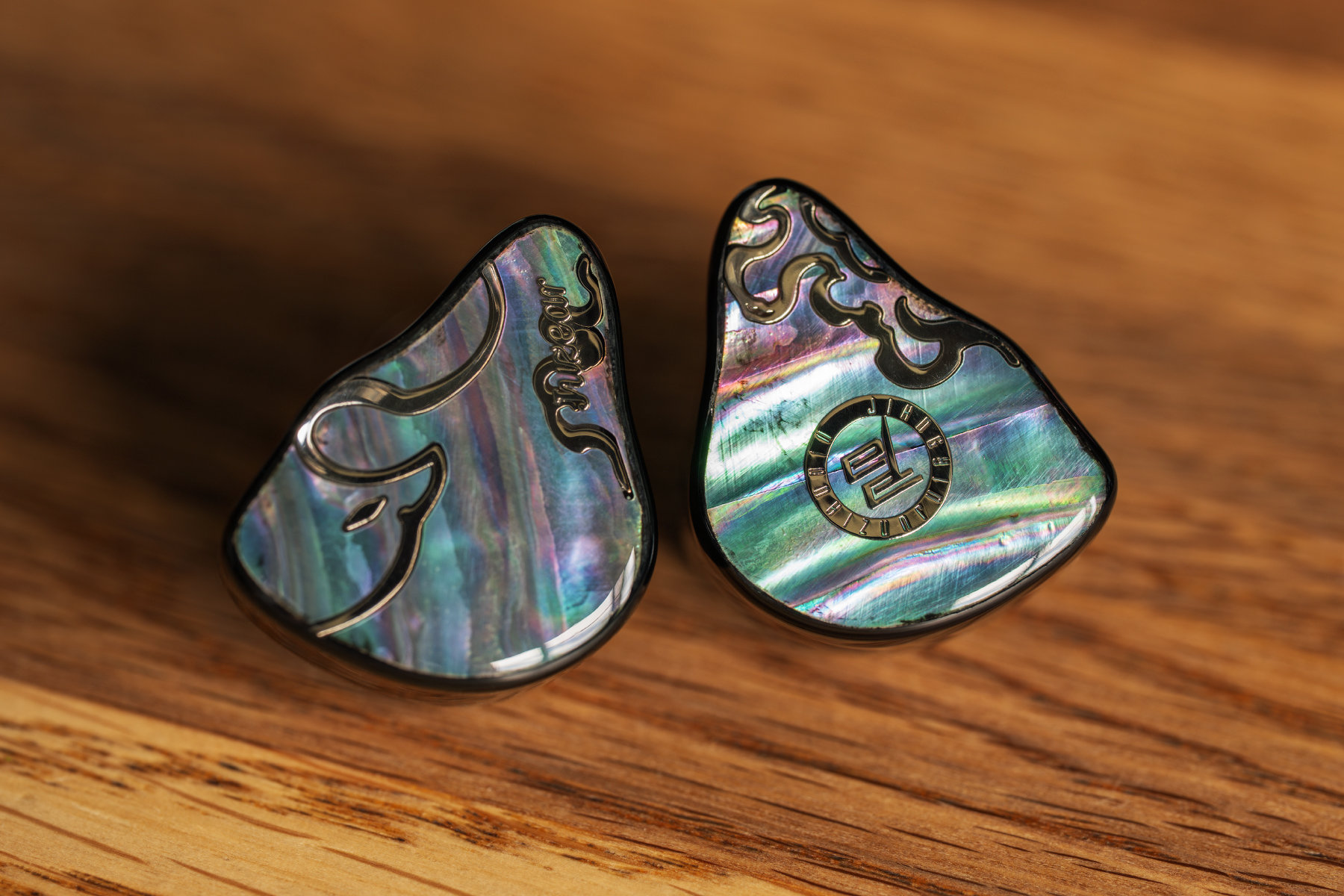
All but the sound
The kit offers a little more than usual.
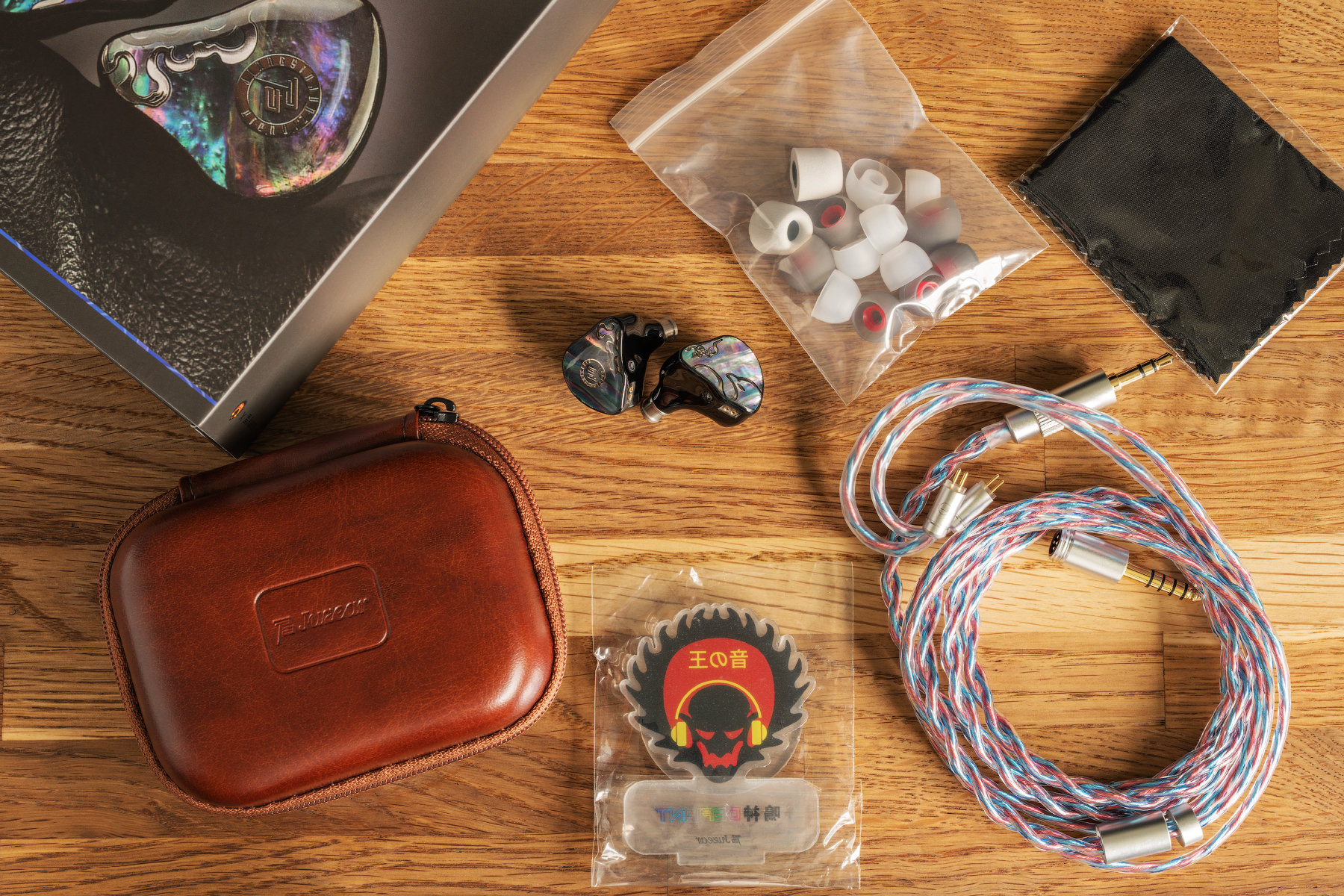
What we find in a thick cardboard box:
- the earphones themselves;
- a cable;
- eartips (7 pairs);
- a case;
- a microfiber cloth;
- a tiny built-up mount (or a ‘totem’, should I say?) with the Z Reviews logo.
The case, as always, is of the most ordinary design, not well-arranged and convenient. The enclosures are of medium size, made of polymer resin. Inside, there is a dynamic driver for low frequencies, as well as 3 armature ones for middle and top apiece. The use of mother-of-pearl plates to decorate the outer surfaces of the earphone enclosures is an unusual and instantly eye-catching design solution.
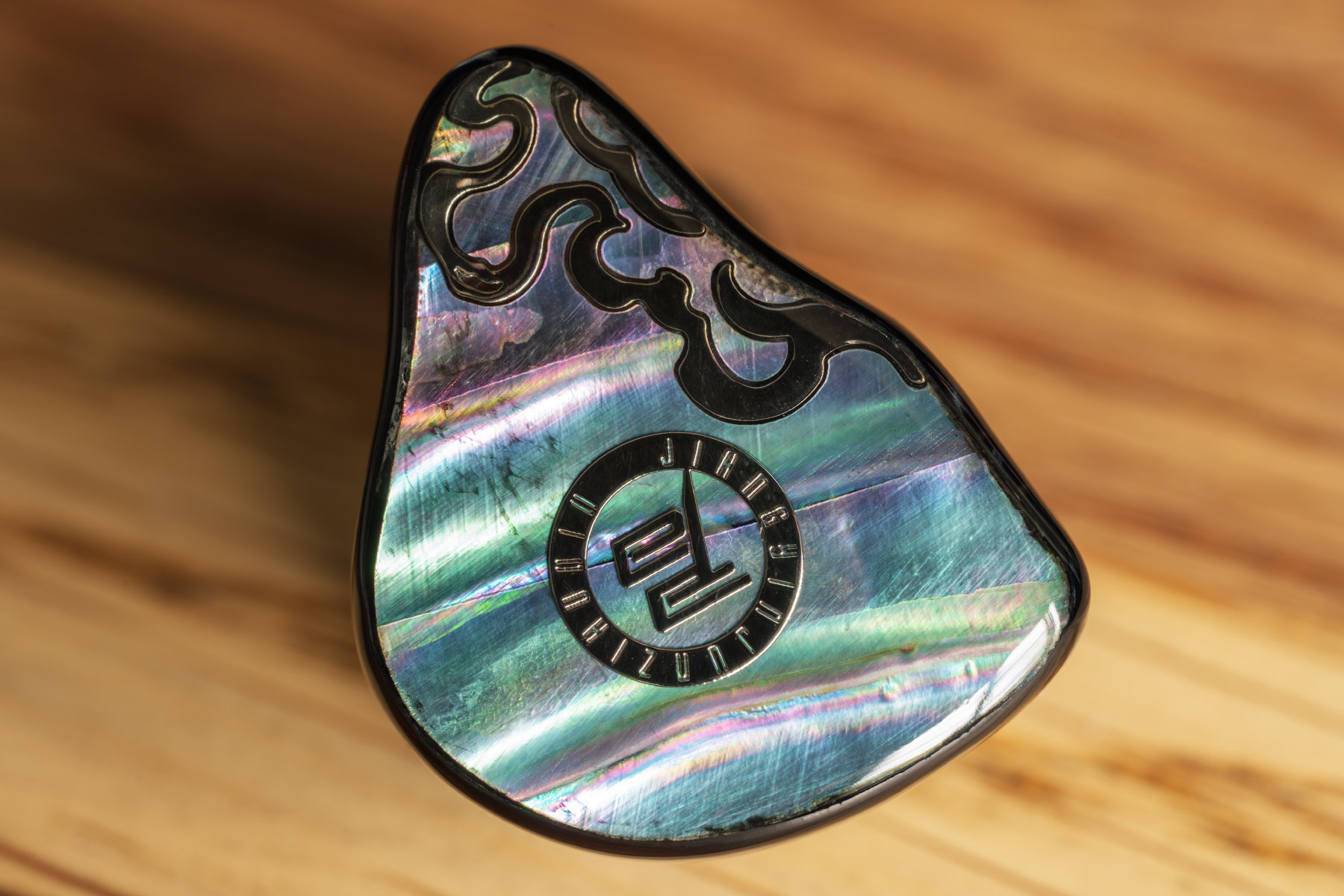
Judging by a large number of microscopic defects, the mother-of-pearl is natural. And, well, the point is that all these cracks and roughs are visible only in photographs taken with good macro optics; in real life, the inserts look almost uniform. For those who don’t like the iridescence and sparkles in their ears, there is a more secular-looking green version.
The connectors are 2-pin; the cable holds tight. There is a single compensation hole next to the cable connection area.
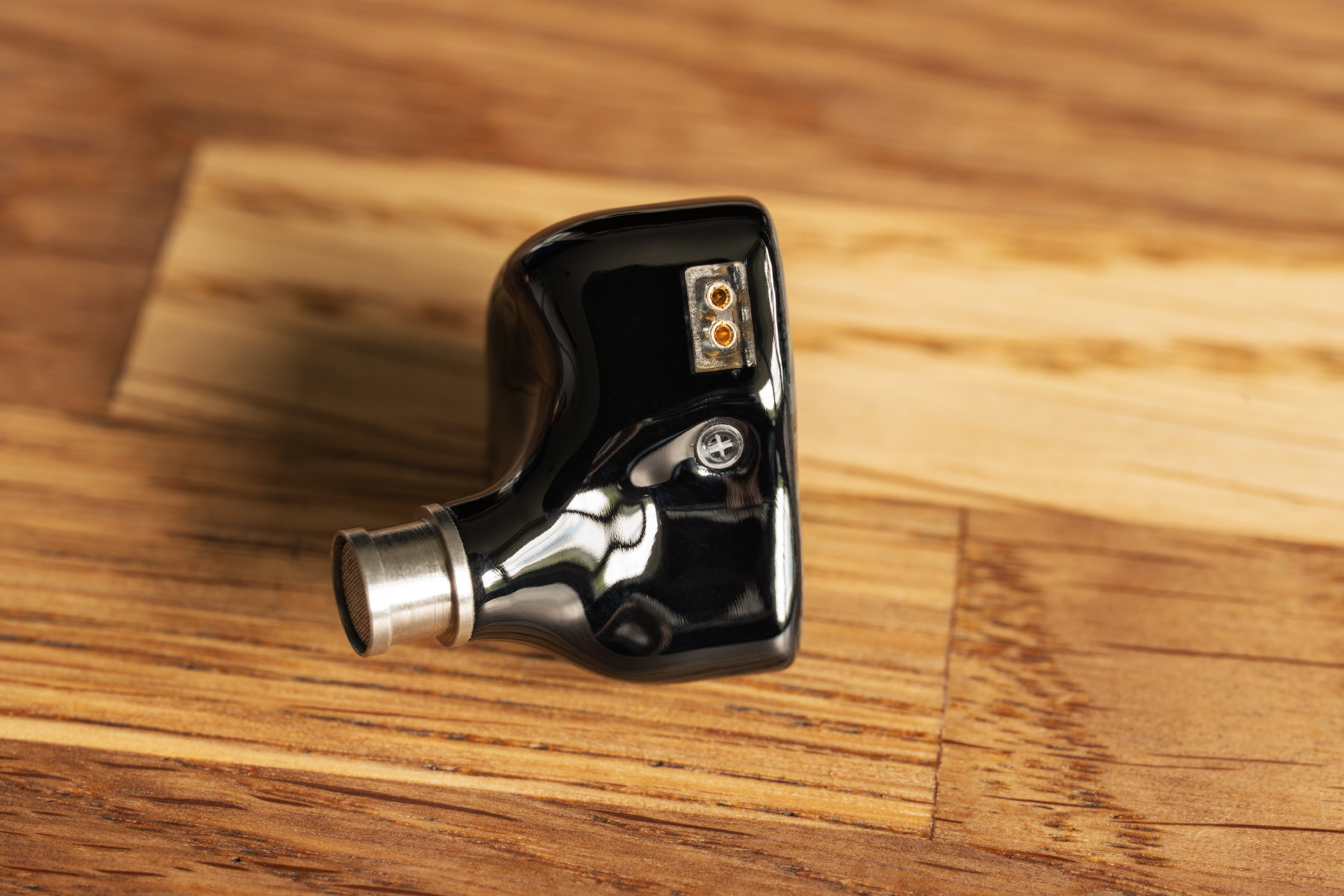
The sound ducts are made in the form of metal cylinders with small chamfers. The diameter of the sound duct itself is 5.5 mm, the chamfer’s one is 6.1 mm, and the length is 5 mm. The sound ducts are covered with neat meshes.

The original cable is very nice to the feel. It’s soft and thick in the right amount. You can change the connectors, which are fixed to the cable with nuts with a grippy texture.
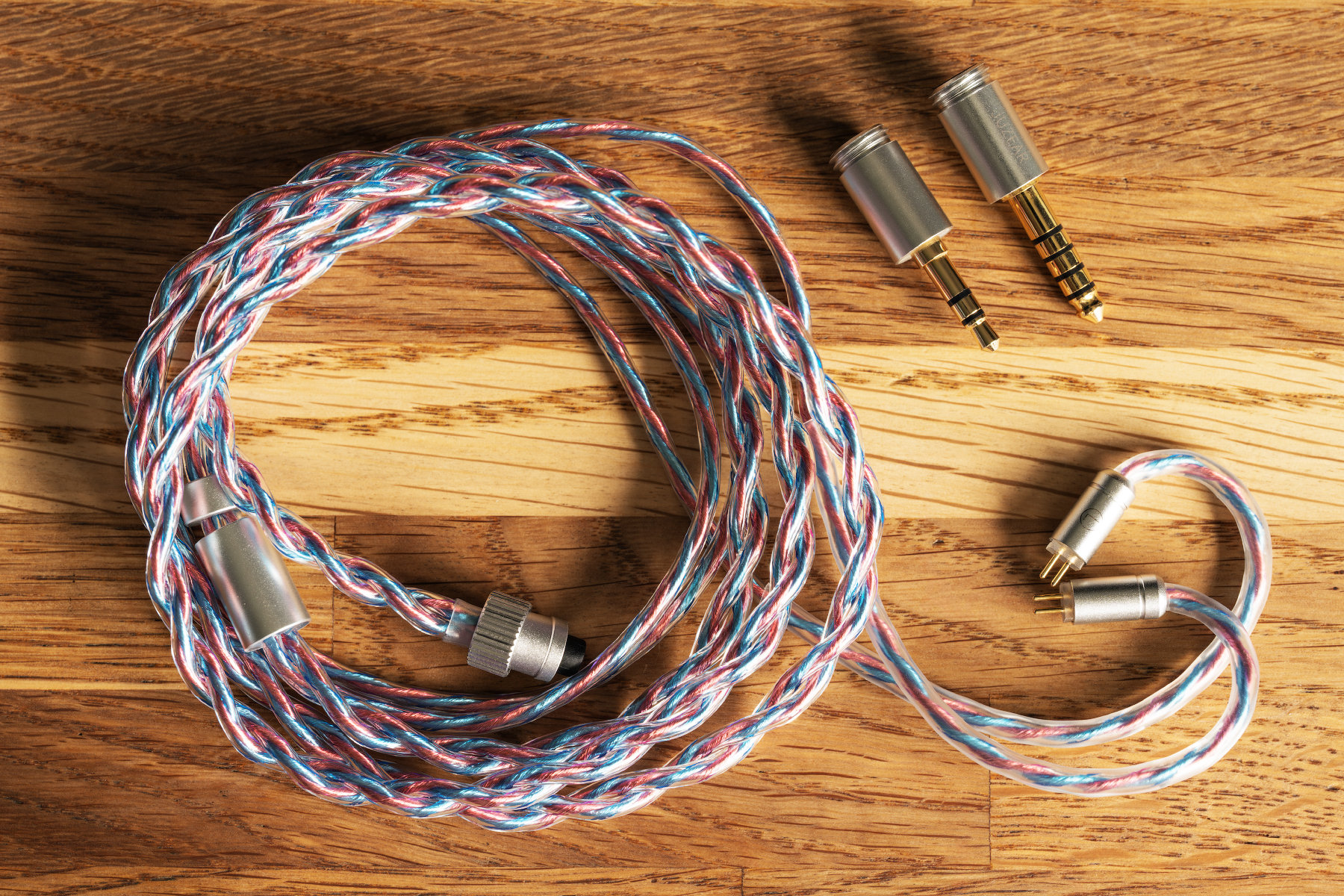
The colors of the braid, as can be seen in the picture above, tally with the mother-of-pearl enclosures.
The original eartips are simple and ordinary. The gray ones have slightly thicker silicone, while the white ones, on the contrary, are thinner. There is only one pair of foam eartips.
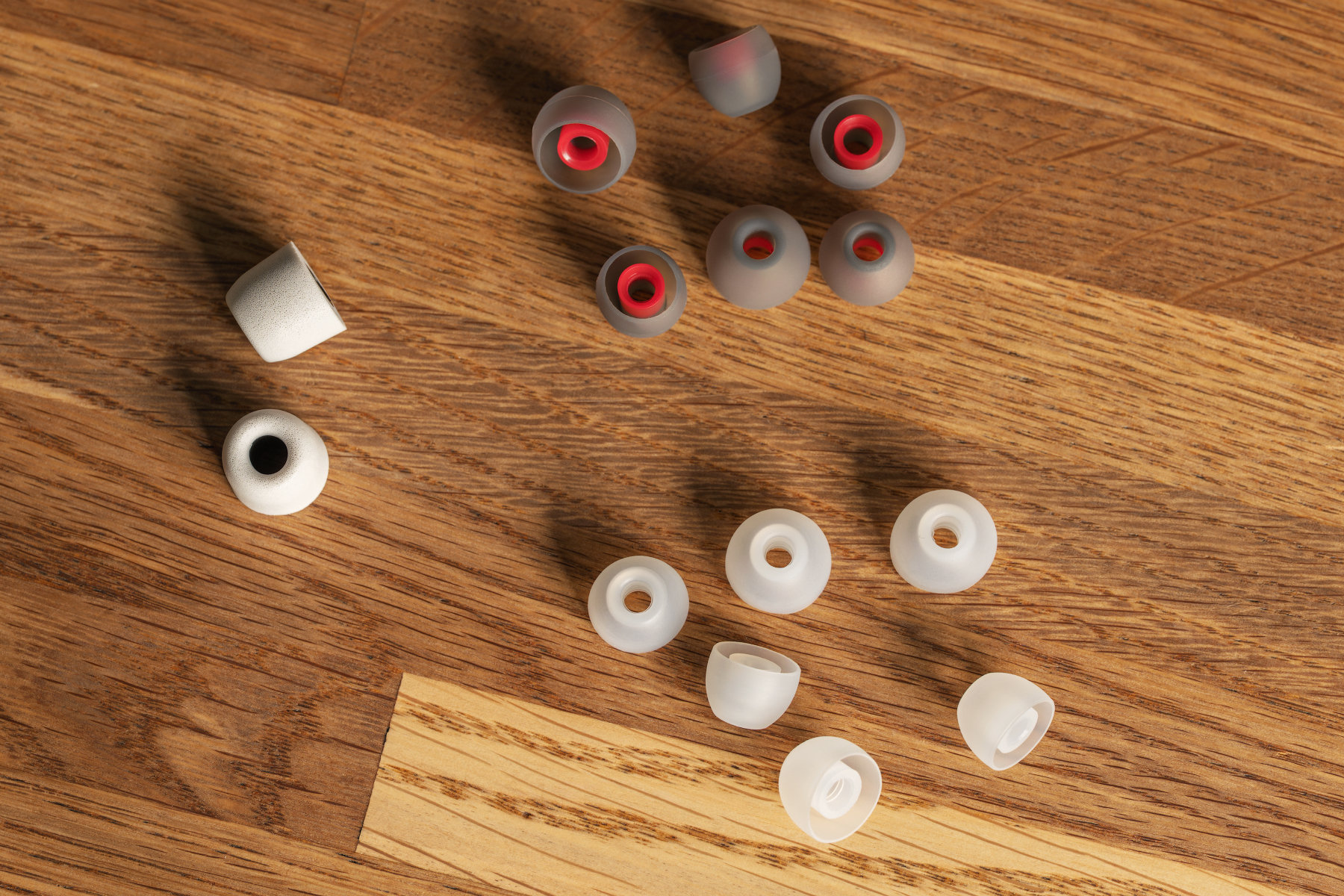
The quality of manufacture and the Defiant kit are well in line with what you’d expect to get for their price. During operation, no pitfalls, ergonomic faults or workmanship defects were found. Well done, in a word.
The sound
You can read about my measuring rig here. Listening was performed through RME ADI-2 DAC fs, Hiby R6 III, and Shanling M0 Pro.
Frequency response of Juzear × Z Reviews Defiant:
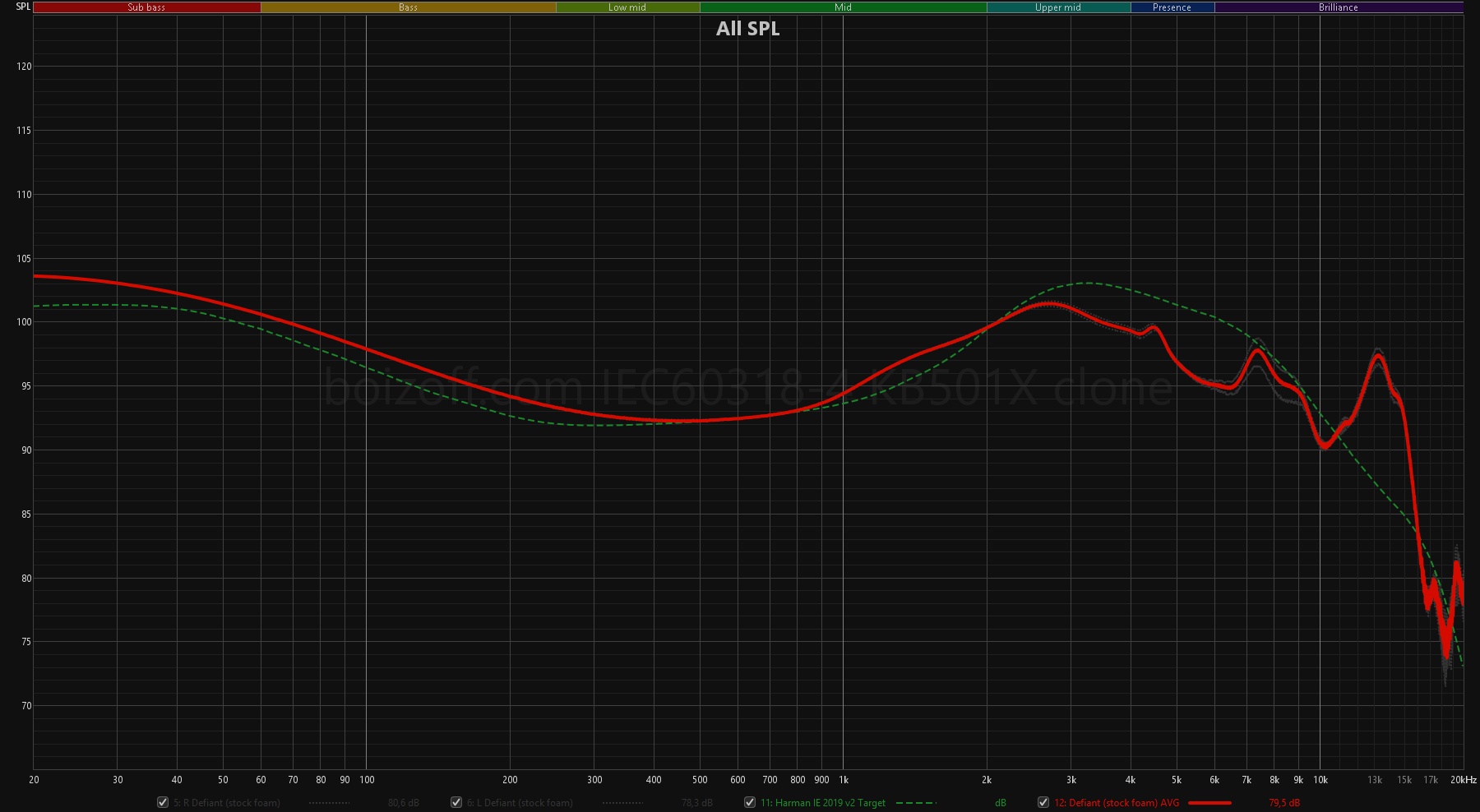
I’d like to note that the Defiant measurements depend very much on the eartips used.

The measurements with the original foam eartips reflect best what is perceived aurally, that’s why this measurement is traditionally checkmarked on my squig. And here I even double-checked myself by looking at the frequency response via Type 4620 – Crinacle have a ‘mountain’ at 13.4 kHz, too:
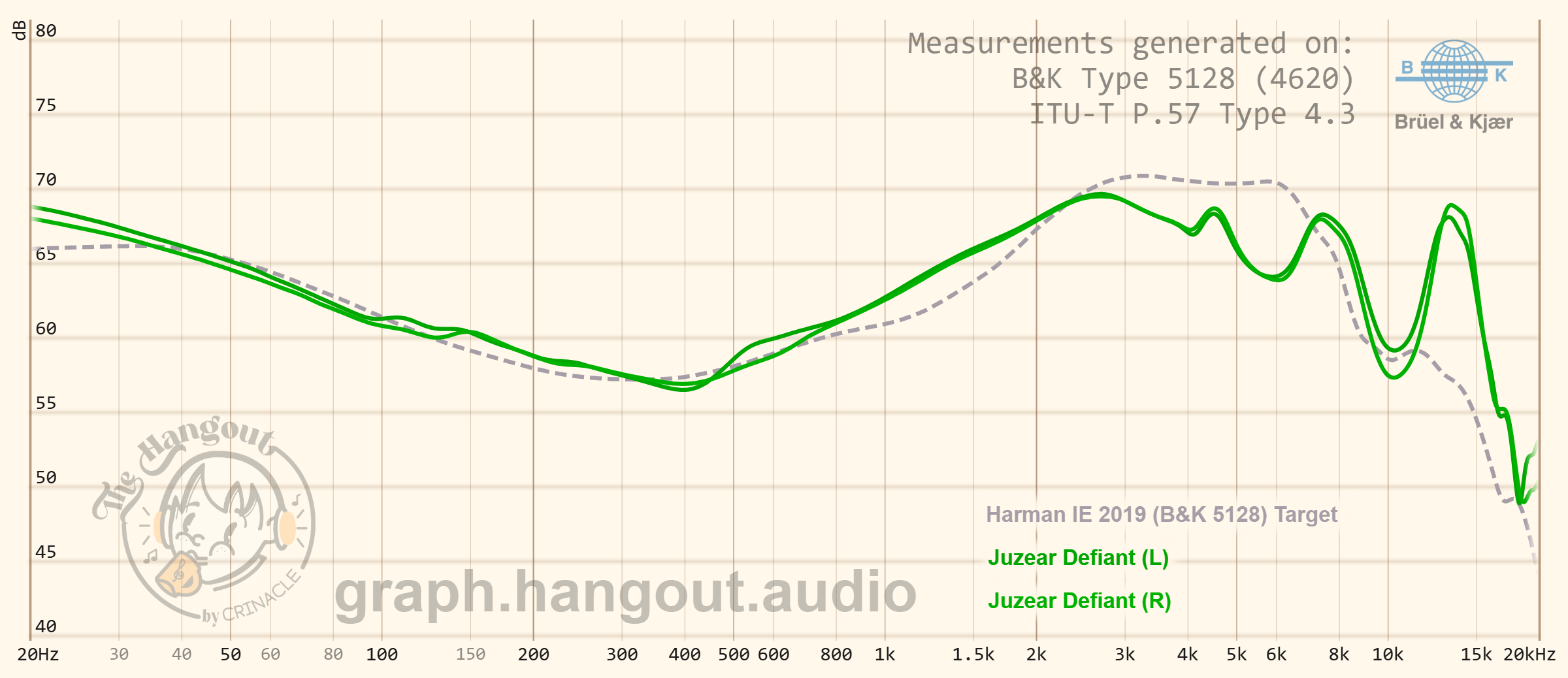
What I can comment on, looking at my graph with IEC711:
- the subbass and bass add 1.3 dB to the Harman standard on average over a range of up to 300 Hz;
- the first resonance is shifted from 3 to 2.7 kHz, is 2 dB below the volume, and, in fact, is brought to the same level as the subbass;
- the upper frequencies are pitched lower by 3-5 dB;
- at 13.3 kHz, there is a 10 dB ‘mountain’.
Nonlinear distortion at 94 dB with the ‘Use harmonic frequency as ref’ option turned off and on:
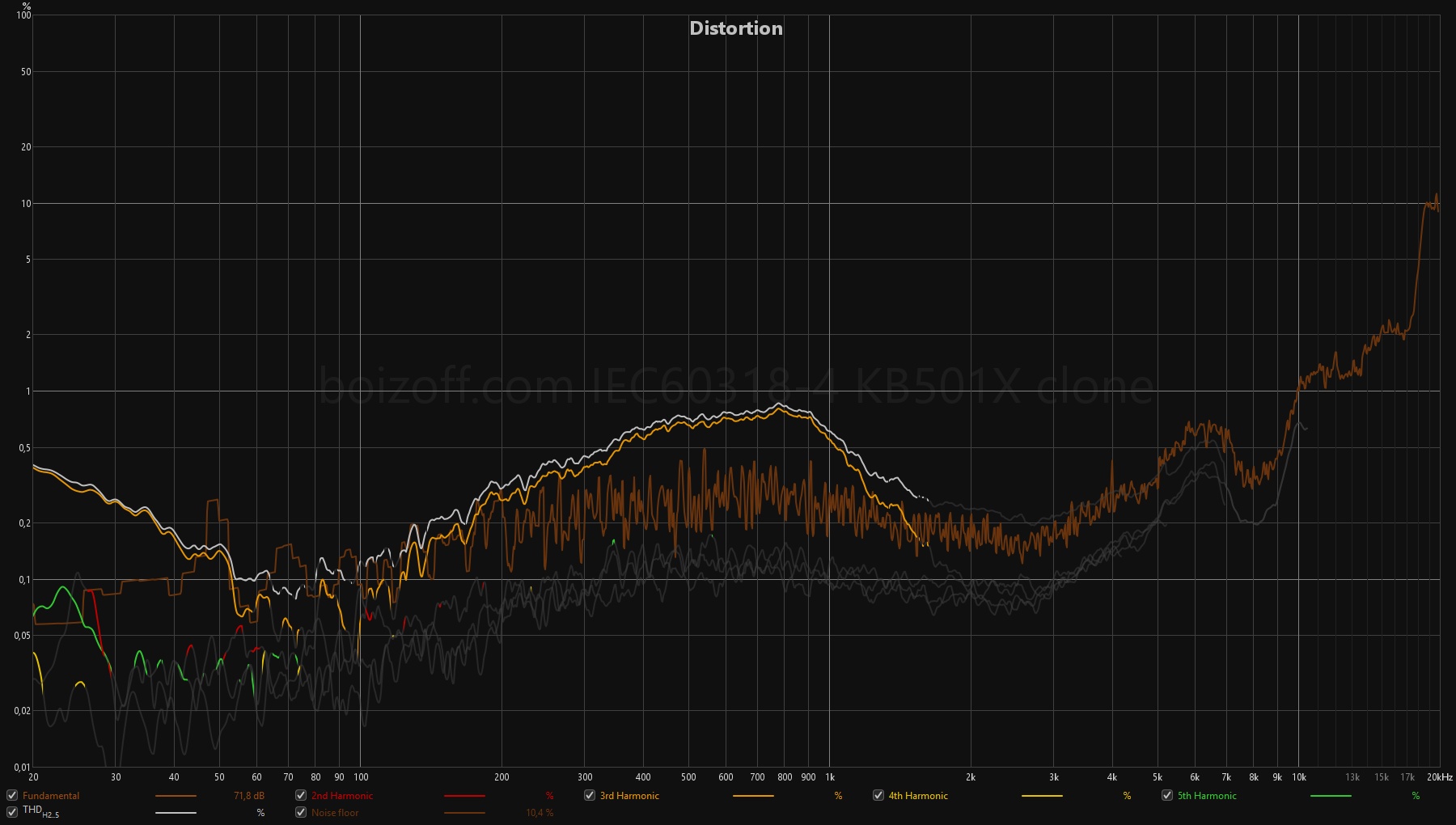
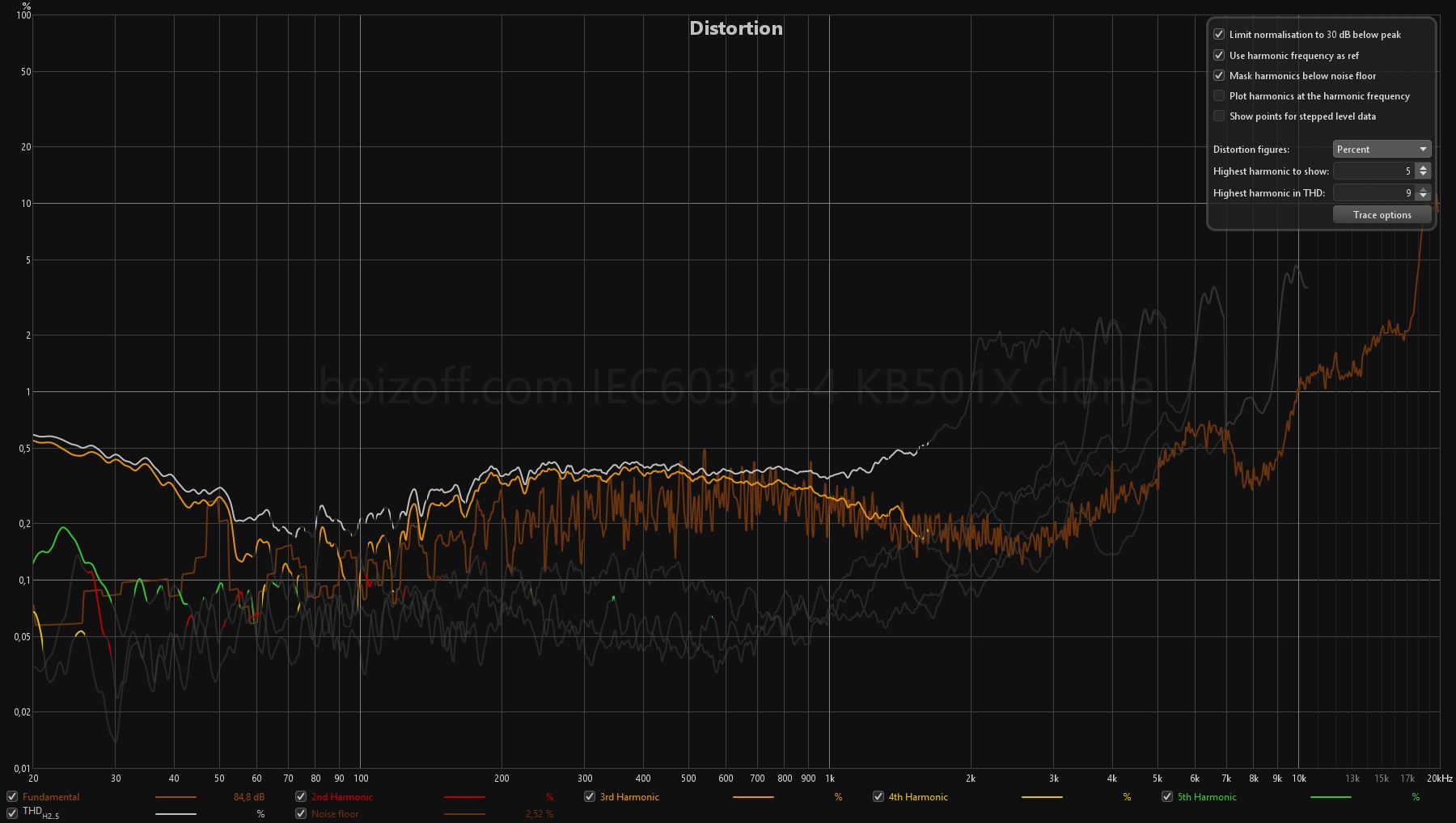
Same at 104 dB of volume:
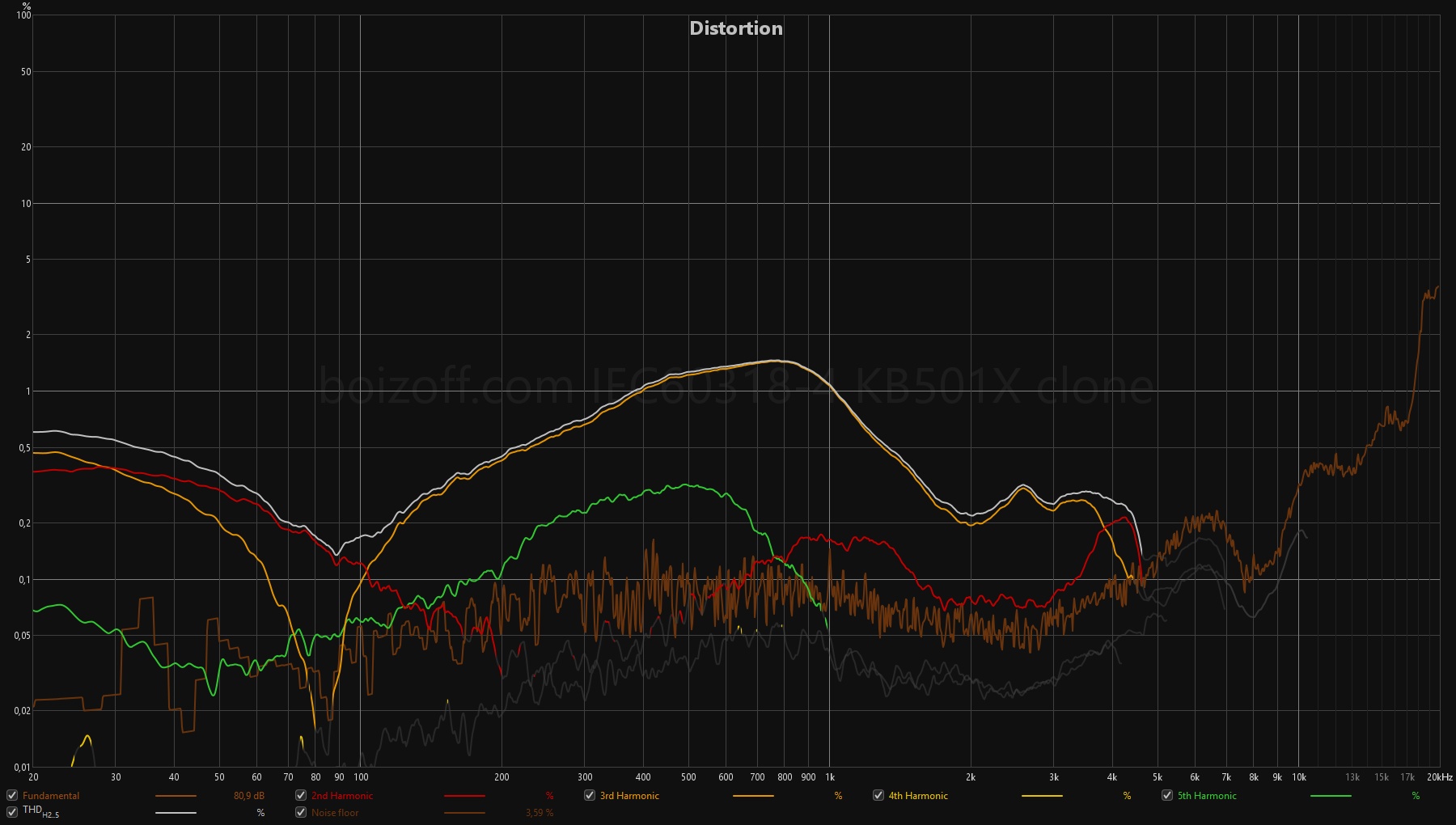
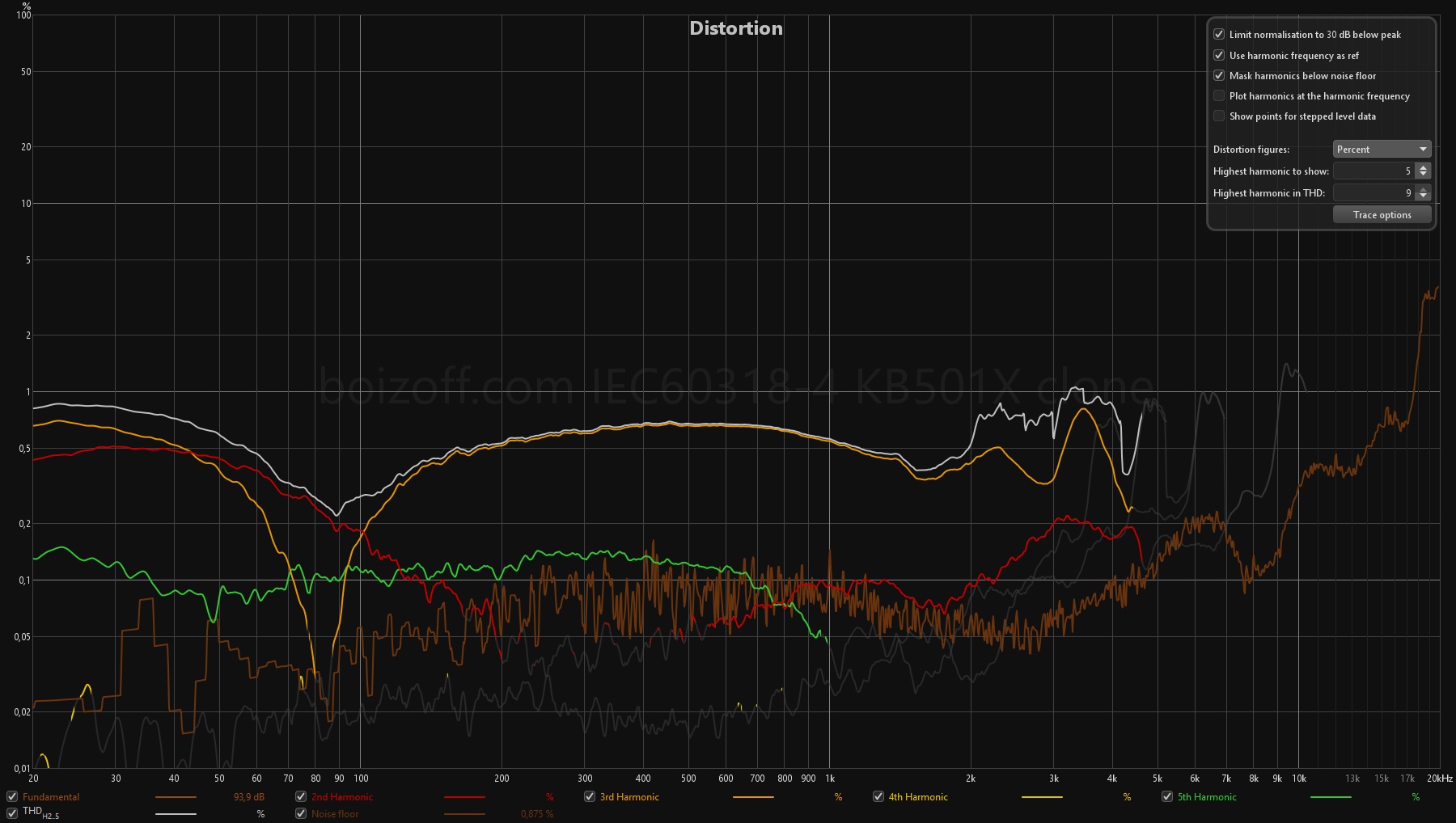
Minimum phase response:

Group delay:
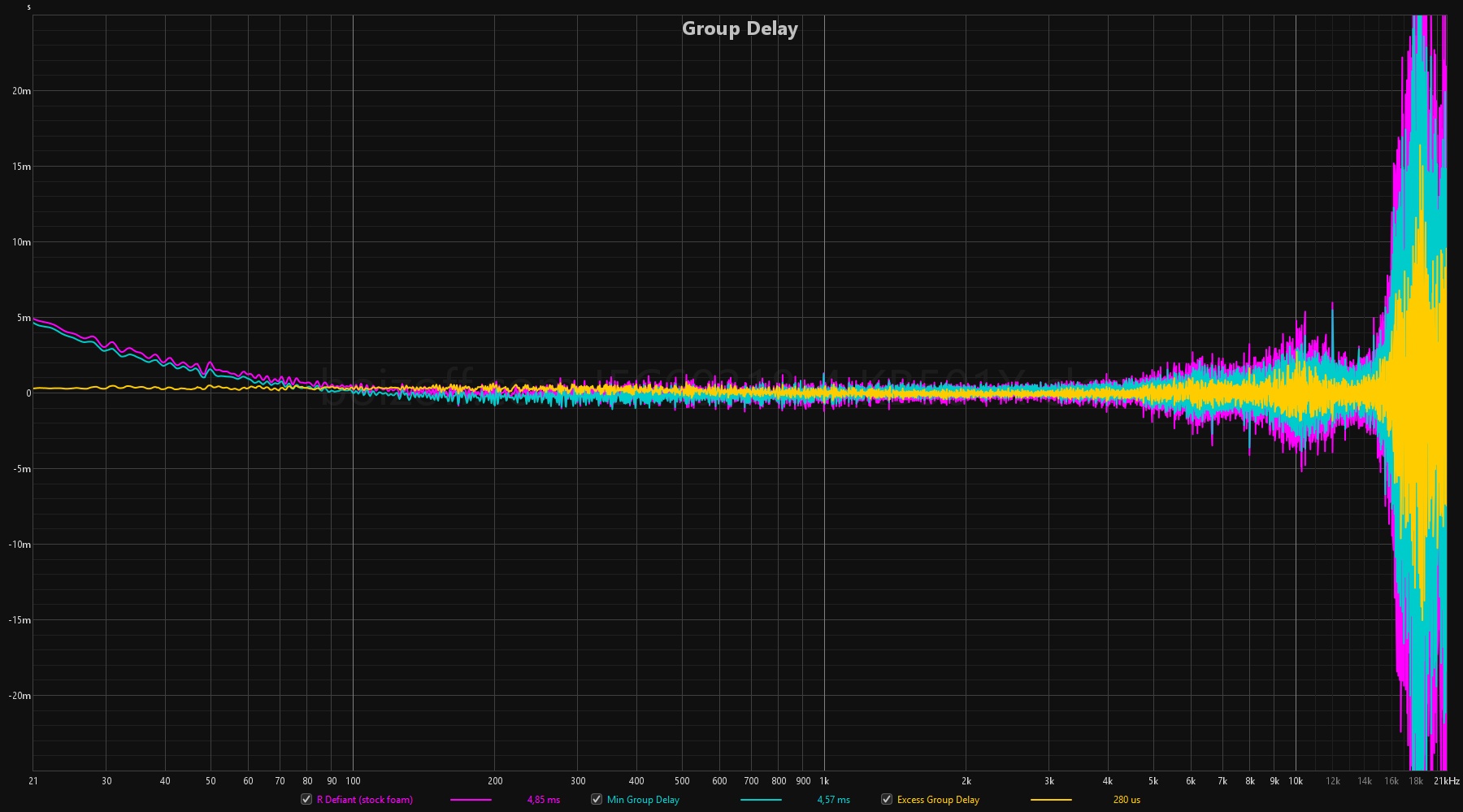
Spectrogram in the ‘Burst decay’ mode:
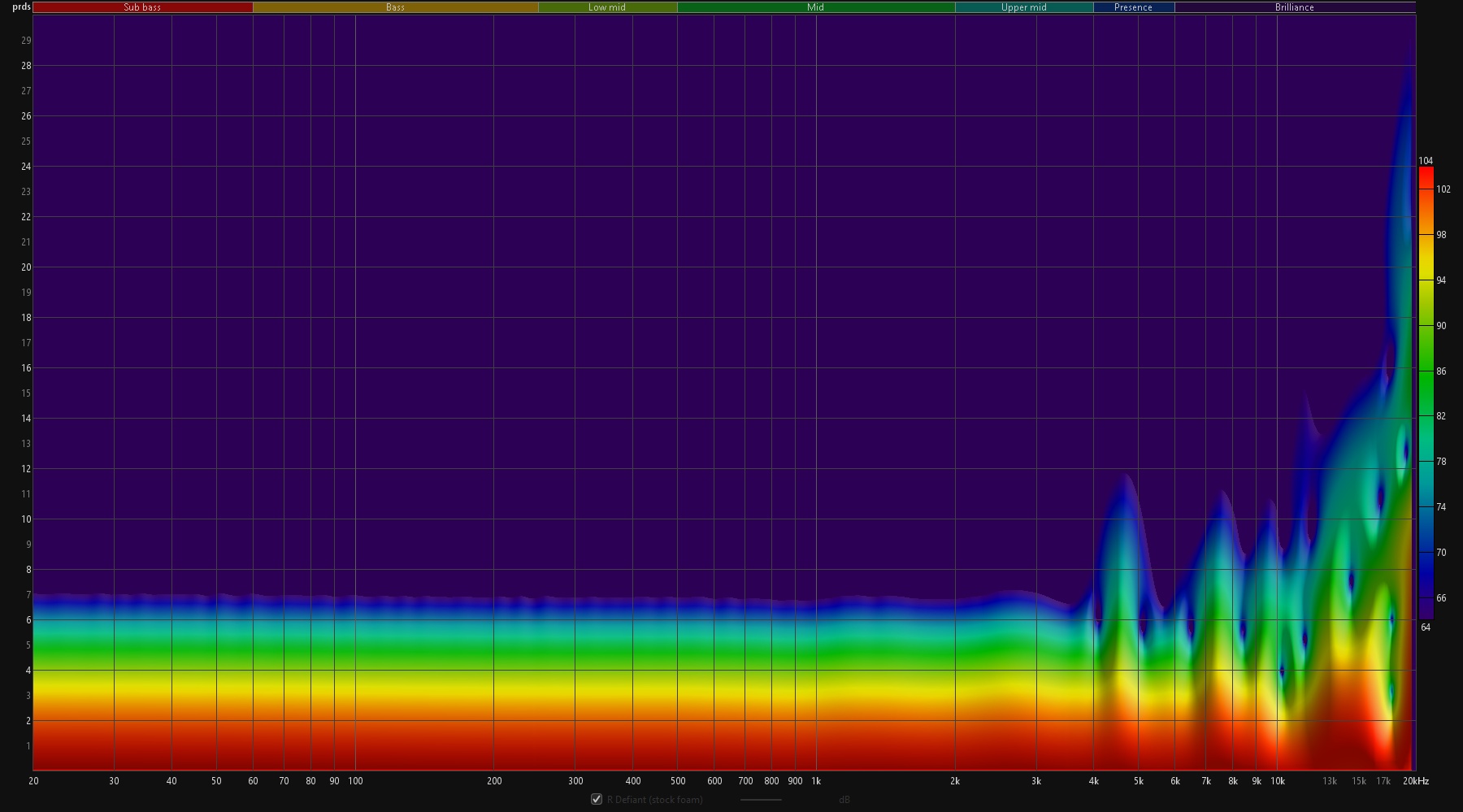
Besides, I managed to get a second Defiant sample by the time I had written this review:

It’s a pretty good repeat accuracy, even though sampling is laughable.
All in all, the earphones are technically excellent.
My subjective and emotional take: before the first listening, I habitually put my favorite Zhulinniao Zhu Rythme on Defiant, put the earphones in my ears and… didn’t understand at all why, in fact, one can love such a sound: I heard an unbalanced, ‘sandy’ sound delivery with a strong volume increase in the 13 kHz range. I got upset because I don’t like writing reviews of bad headphones and went to bed. Further analysis and experiments with eartips revealed the following feature: the problem occurs with my habitual medium-deep fit. While I told in the situation with Aoshida E20 or Moondrop Meteor that this full-bodied audiophile fit is a must-have, I would warn against it when it comes to Defiant. Better get TRI Clarion, Whizzer ET100AB, SpinFit CP100, actually any eartips that will let you comfortably position the earpieces a little closer to the entrances to the ear canals without breaking the insulation (this is also very important for Defiant). Divinus Velvet WB (‘wide bore’) will do well, as well as the recently introduced Divinus Prism that are the likes of Velvet WB, but made of thermoplastic elastomer; they stick to the ears, their material is thick, so the eartips soundproof well and don’t fall out. More information about them will be in the next part about eartips; for now, you can have a look at the first, second and third parts.
And then it turns out well. It becomes clear what kind of sound the manufacturer wanted to convey to the listener.
The Defiant sound is balanced between the lowest, thickest subbass and emphasized ultra-high frequencies. The upshot is sort of a rich in contrast, but also balanced sound signature with additional ‘detail’ and ‘sharpness’, as it’s usually described in words. I’ll note three nuances:
- it may seem from the measurements that there is a lot of low frequencies, but the low-frequency range sounds so restrained when paired with the rest of the sound range that I’m inclined to think that my rig is telling a little lie. I feel like it should be some 3 decibels less.
- the sibilance doesn’t completely disappear, but it is significantly weakened if the fit is changed to a less deep one through the selection of eartips. Somewhere this sharpness is appropriate, somewhere else it gets in the way and makes the musical material sound somewhat unnatural.
- In the middle, at about 1.3 kHz, there is also a small volume boost, by means of which the sound ‘moves’ closer to the listener. And, probably, this is exactly what ‘balances’ the perception of active low frequencies.
What does the sound delivery like this lead to? First of all, you have to be selective about the quality of the musical material: what’s poorly mixed will sound very bad because at 13 kHz there will be only ‘dirt’ that the soundman forgot about. A striking example is Venus In Furs (Angie) where crackling and high-frequency noise come to the fore. Besides, you have to be selective in relation to the musical material: female vocals sound harsh and sharp, sometimes losing their naturality. On the contrary, electronic genres, all kinds of drum and bass, hip-hop and rap, for God’s sake, will sound impressive.
In general, Defiant form a daredevil ‘fun’ sound delivery with a slight smooth accent in the upper part of the midrange, as well as added detail and ‘air’, which can lead to unnatural sounding of some tracks, as well as just to rapid hearing fatigue.
Comparisons
Based on the known rating, it’s necessary to compare Defiant with the following excellent models:
- Shanling TINO;
- Simgot EM6L;
- Rose Technics Star City 5 Pro;
- Truthear HEXA.
Defiant vs. Shanling TINO:
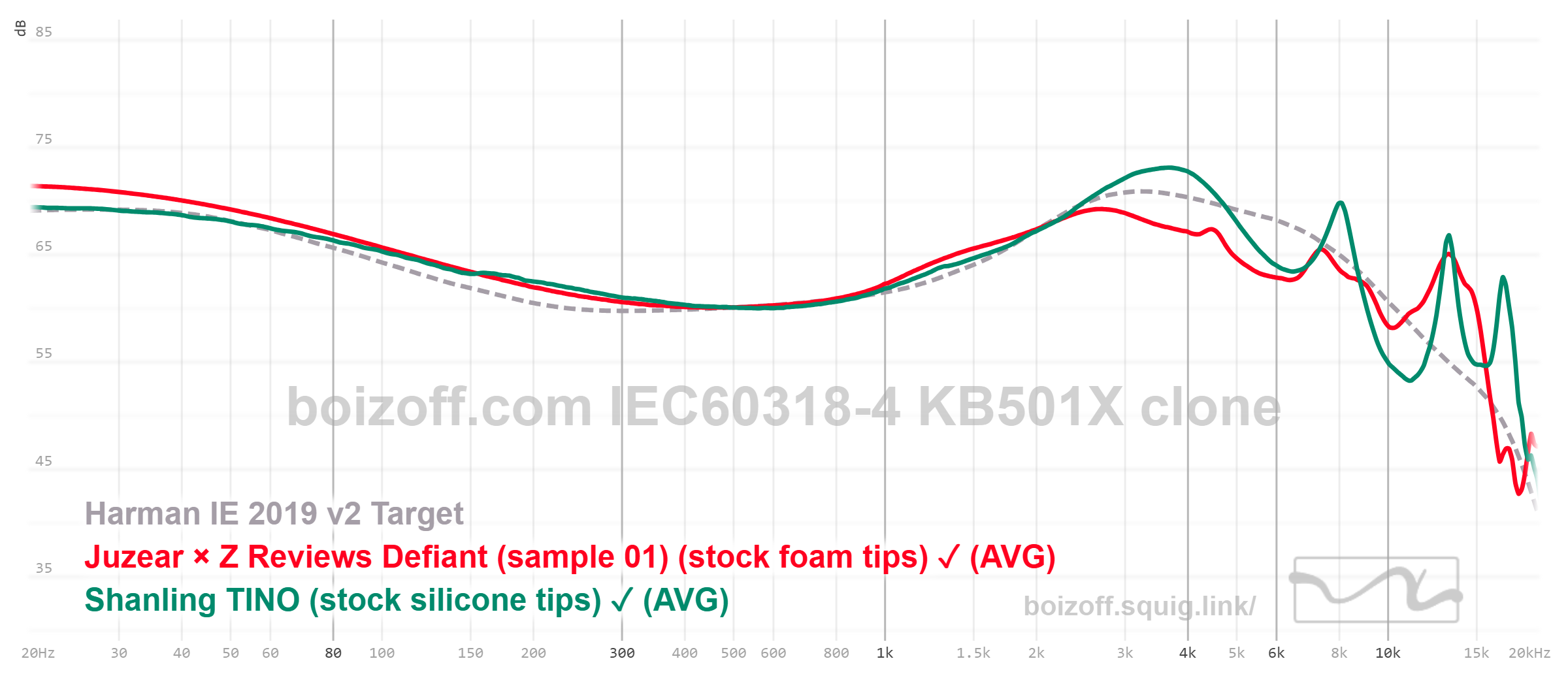
Due to the much more active upper middle, TINO sound more balanced, but significantly lighter than Defiant. The TINO sound has more ‘air’ and ‘volume’, whereas Defiant are more aggressive and assertive.
Defiant vs. Simgot EM6L:
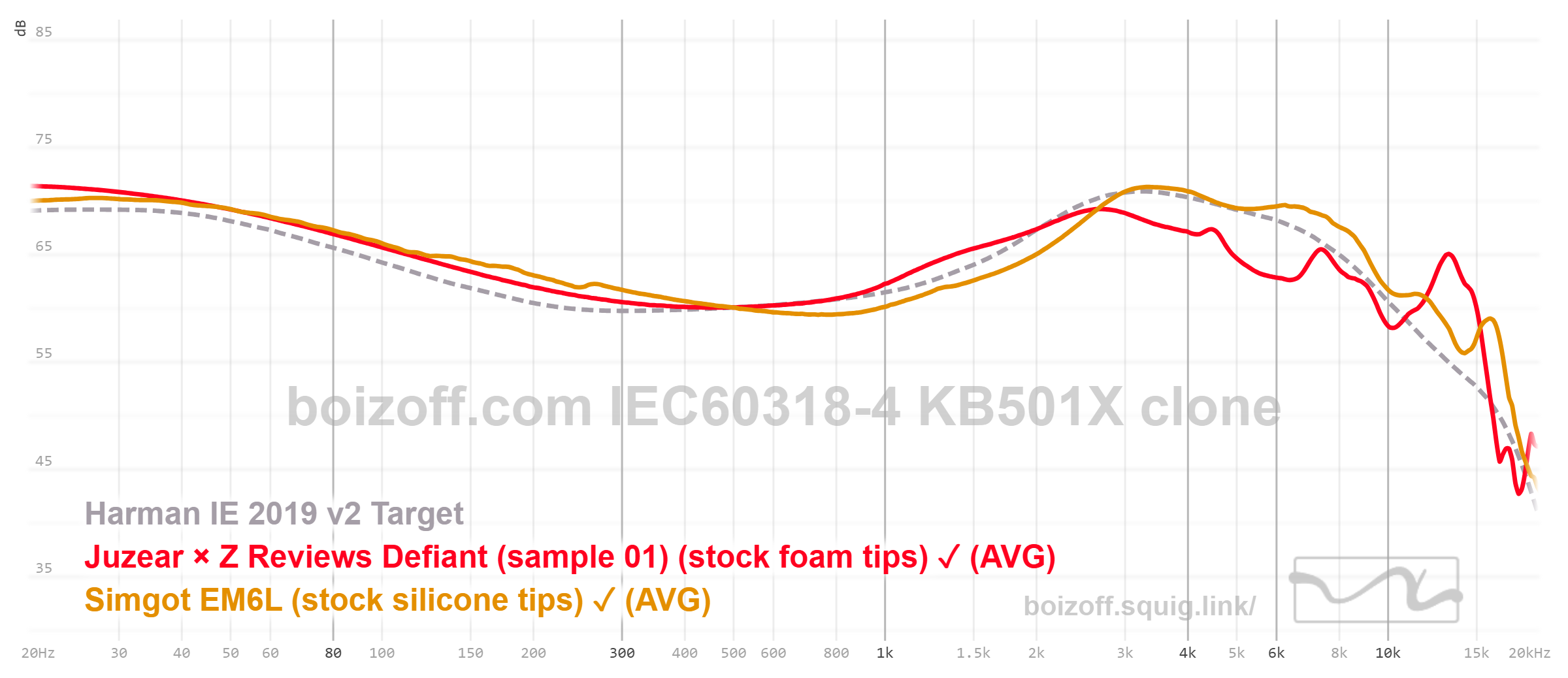
EM6L add a slightly heavier subbass and bass to the Harman curve sound, and this is where they are similar to Defiant. The differences start further away, at 500 Hz, and they’re radical: the EM6L sound is perceived to be more balanced and ‘voluminous’, while Defiant sound ‘closer’ and sharper.
Defiant vs. Rose Technics Star City 5 Pro:
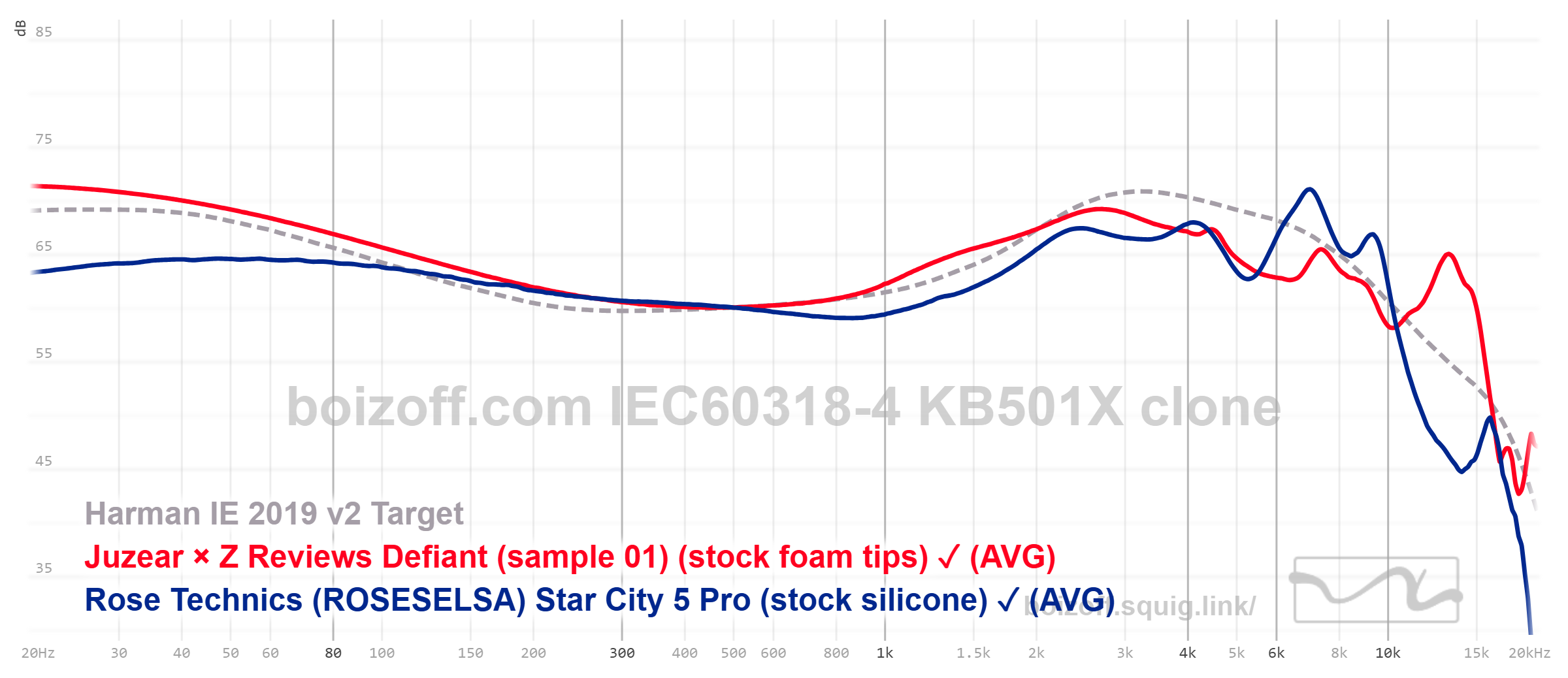
Star City 5 Pro offer a ‘relaxed’, lukewarm neutral sound with an emphasis on mid-treble frequencies. Star City 5 Pro sound ‘cleaner’, their sound is less ‘exalted’, but they also don’t provide such a ‘punch’ as Defiant do. These earphones are completely different in sound.
Defiant vs. Truthear HEXA:
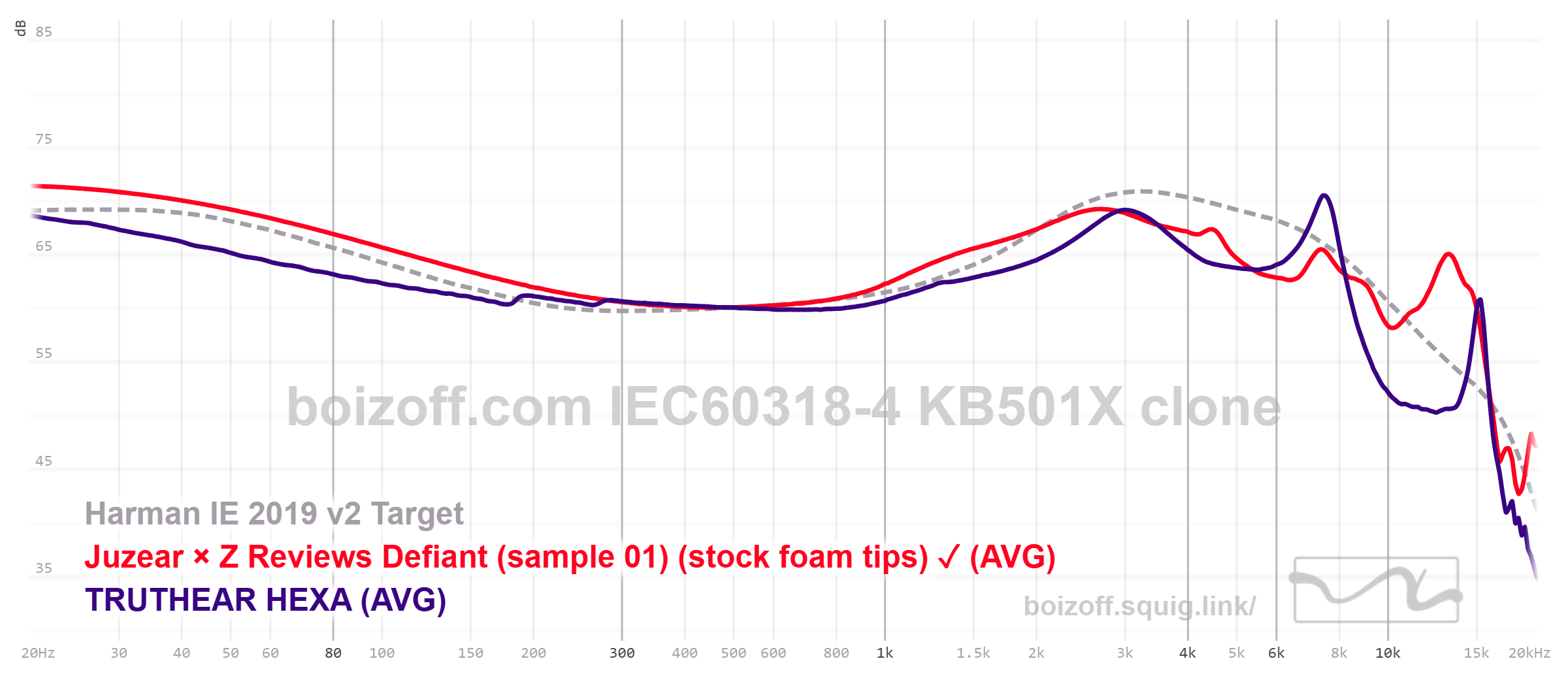
HEXA, as the earphones close to the ‘JM-1 -10 dB tilt’ curve (if you don’t know what it is yet, here’s a detailed explanation), sound neutral. In other words, the HEXA and Defiant sounds differ in just about everything.
And, well, if you try to answer the question “Is there anything similar, but cheaper?”, Kefine KLEAN provide a sound that’s similar to some extent and cost three times less:
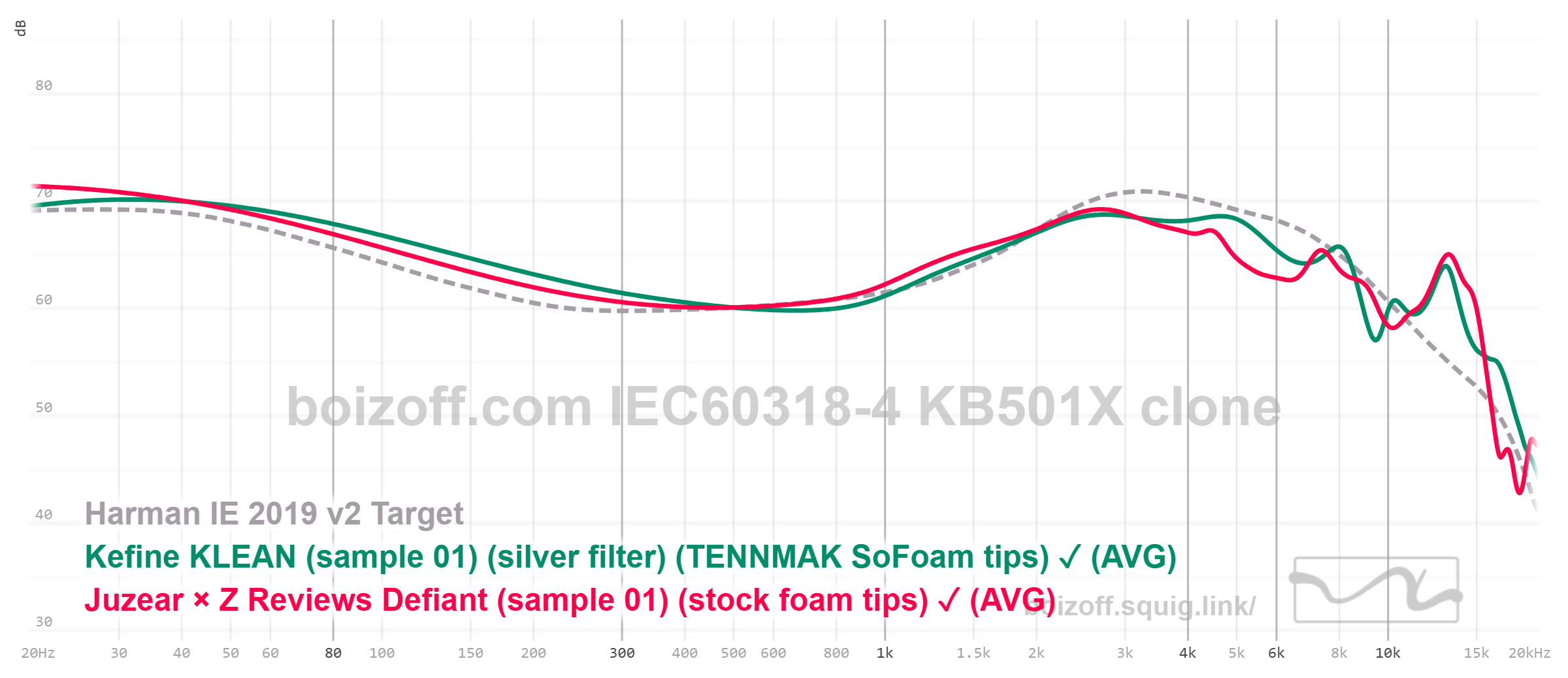

Key differences:
- KLEAN rely on bass, while Defiant rely on subbass and have distinctly more of it, compared to the former;
- KLEAN have more information in the 5 kHz area;
- KLEAN have a slightly less pronounced peak at 13 kHz.
Apart from that, it’s worth mentioning the following:
- KLEAN have changeable sound ducts that affect the sound signature;
- KLEAN enclosures are tailored to an even less deep fit;
- the KLEAN original cable is ridiculous compared to what comes with Defiant.
Summary
I can’t really praise or criticize Defiant in any special way – they’re just in-ears with a rather peculiar sound delivery. This model doesn’t set a new sound standard for its price, doesn’t offer ‘the same thing, but for less money’, and doesn’t have any incredibly extensive kit that would include a portable DAC or out-of-the-ordinary expensive eartips.
On the other hand, they have no obvious flaws: someone may like their swinging and ringing cheer, the shape of the enclosures, or mother-of-pearl decor. And it’s also impossible to find fault with the technical aspect of Defiant. As for the high-frequency accent, everything can happen in different ways: with a certain fit, you won’t even pay attention to it, or you will, but won’t be upset. Or rather, it will become the feature that will prevent you from ‘making friends’ with the Defiant sound.
To buy or not to buy: strictly after personal acquaintance with the sound, or better yet, a ‘live’ comparison with Kefine KLEAN.
If you decide to buy them, here is a non-affiliate link to the HiFiGo representative office on AliExpress. With the code IGOR10, there will be a discount of… guess how many percent?

